About 20 years ago when I was doing research for my book Looking Back at White Bear Lake, I came across a picture of some event in downtown White Bear Lake involving a group of cars; it was not labeled. After a bit of digging through old issues of the White Bear Press, I was able to marry the picture to a one-time White Bear Lake event called Play Days and the associated Jallopy (sic) Race.
The White Bear Press headline on September 15, 1939 read:
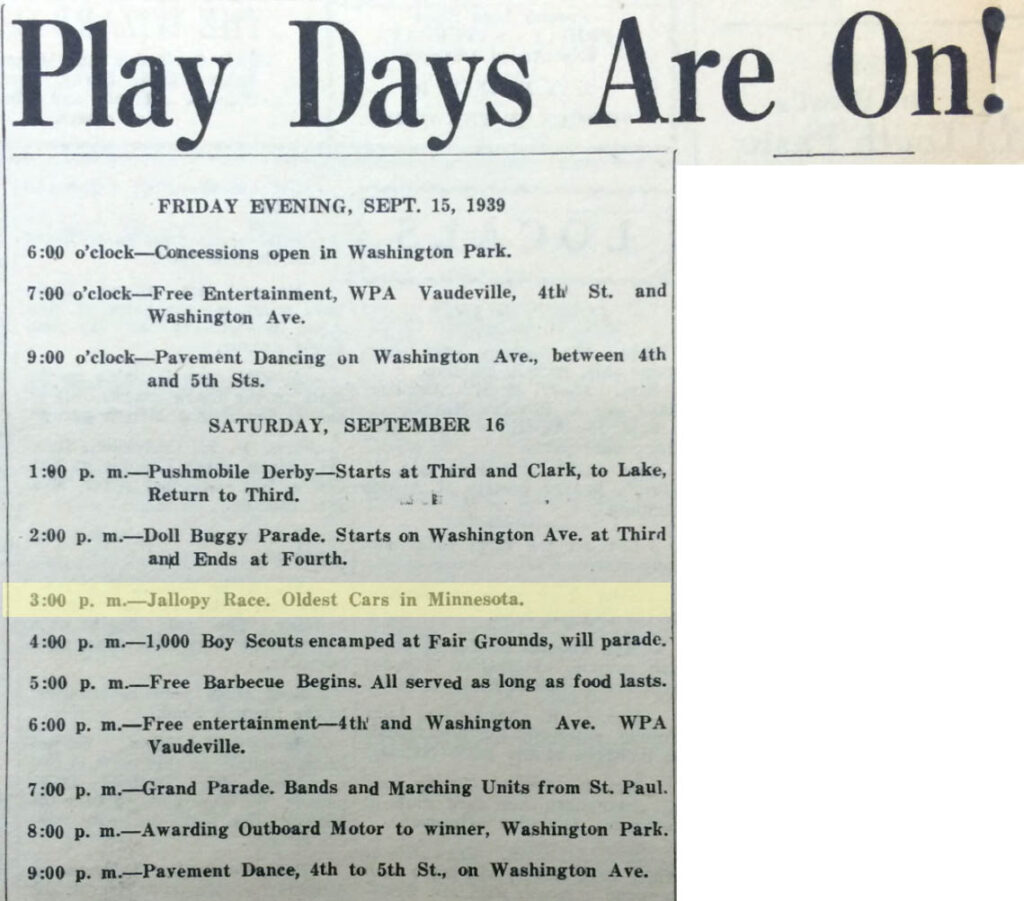
In 1939 the Great Depression was nearing an end. The Works Progress Administration (WPA), later renamed Works Projects Administration, had been created to put people to work during the Depression and by 1939 the WPA was beginning to lay off workers in the hope that they’d be able to return to jobs in the private sector. The WPA provided jobs mostly to men who were not formally educated. Between 1935 and 1943, 8.5 million people were employed building up the public infrastructure of the U.S., such as parks, schools and roads. People with arts and entertainment skills were also employed by the WPA. In 1939 the White Bear Press reported on Washington Park being improved, numerous streets being upgraded, the post office mural painter being chosen and the flagpole on the southwest corner of Washington Park being erected (the stonework and dedication of it would not occur until 1940). All of these projects were possible, in part, because of the WPA. As can be seen in the above Play Days program, it included entertainment provided by a WPA Vaudeville group.
The Great Depression took a toll on people: mentally, physically and monetarily. By 1939, several years into the Great Depression, I think that people had been giving whatever they could for so long, that their limits were being tested. Although there were other events and community gatherings that had been held in White Bear during that time, Play Days was, as the newspaper reported, “…not a “fire carnival,” nor is it for profit, nor are there to be outside entertainers. On the other hand, it is to be strictly a “homemade” affair…” The same article went on to say that “Bob Kaye, general chairman, wants it understood that this is not given for profit, and it is hoped that the small charges for certain things are merely for the defraying of expenses; that the entire function is to represent the spirit of White Bear, without profit.”2 It appeared that people could participate for free without the expectation of doing anything but just showing up, a welcome event for everyone.
The day of the event, the race details were given.
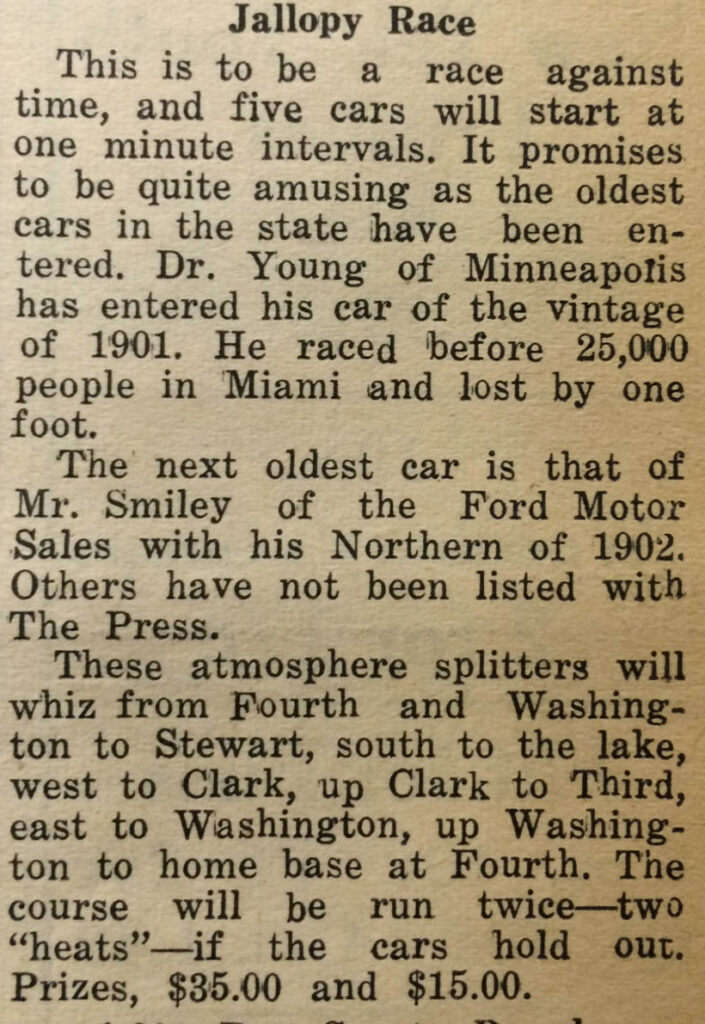
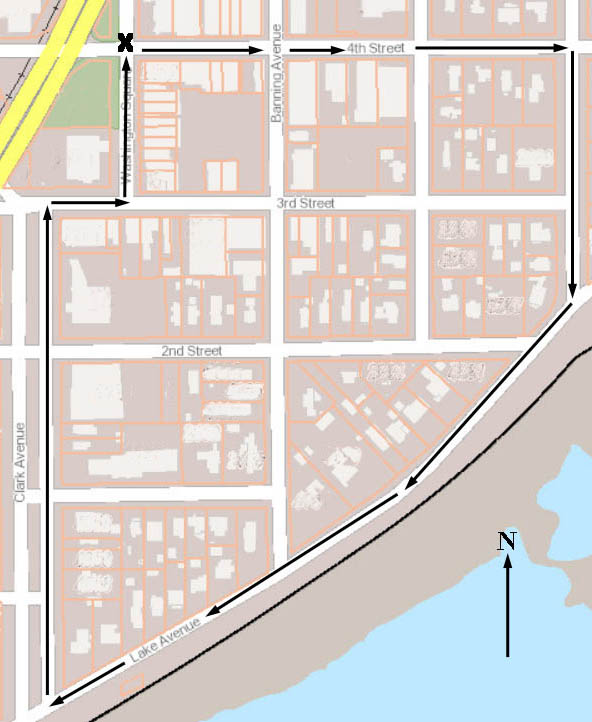
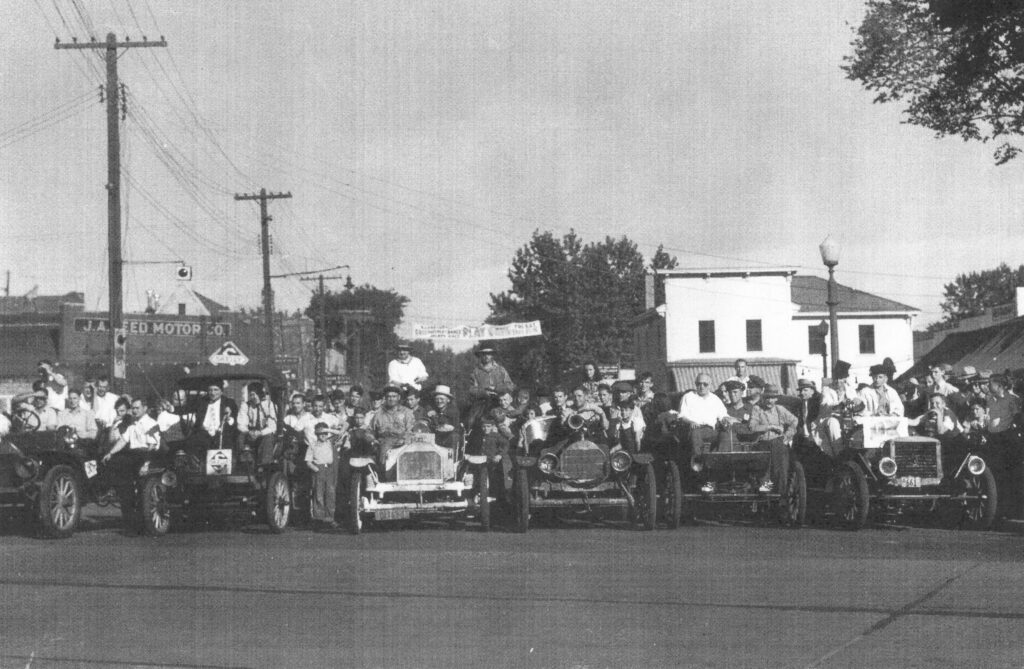
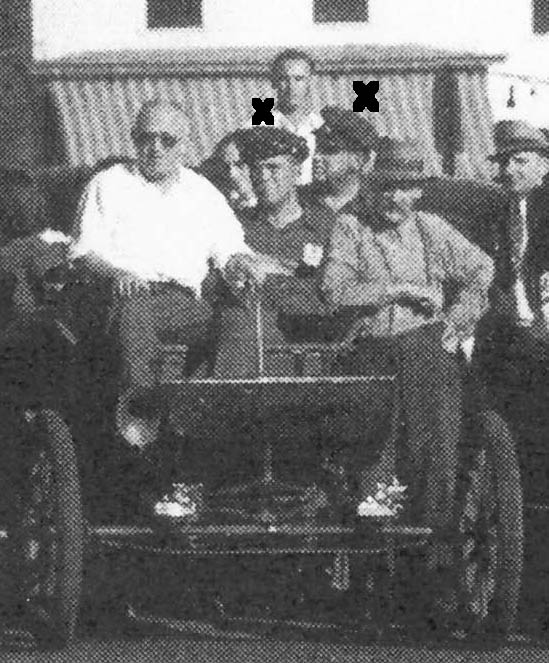
The following week the newspaper printed the results:5
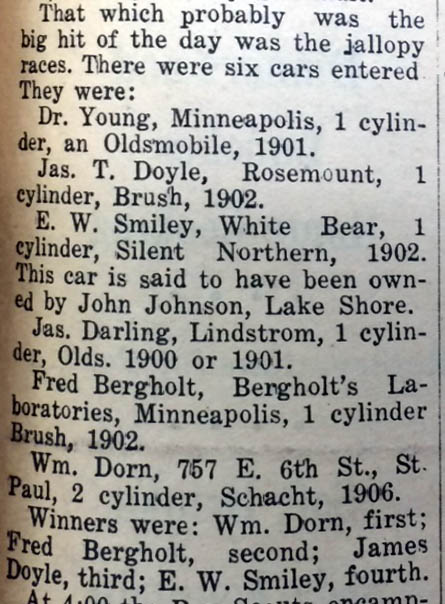
I’ve spent a lot of time looking at old pictures of White Bear Lake and the people in those pictures. It was an unexpected pleasant surprise when I spotted family members Adlore and Richard.
Thanks for visiting, come back soon,
Cindy
© 2023 Copyright by Cynthia Vadnais, All Rights Reserved
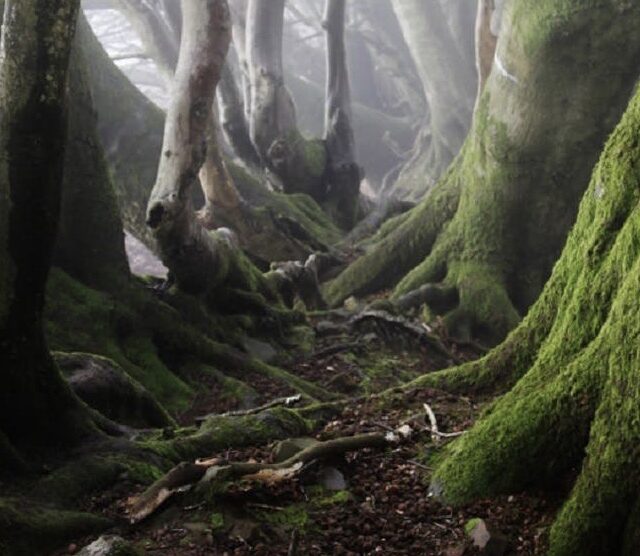
Steve and I sure enjoyed seeing all the old cars, and seeing Grandpa and Uncle Dick. Reading the newspaper articles on the race and thinking about what it was like for them during the depression.